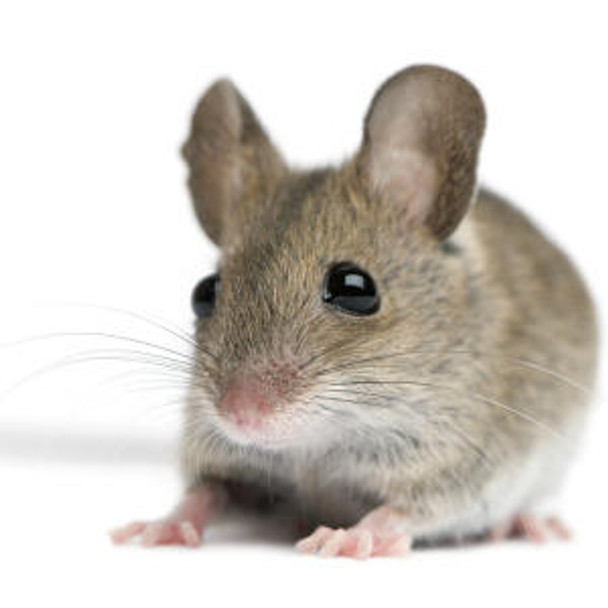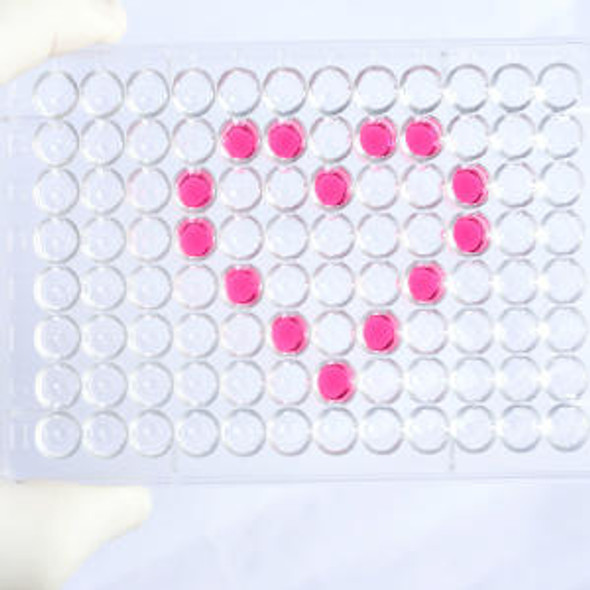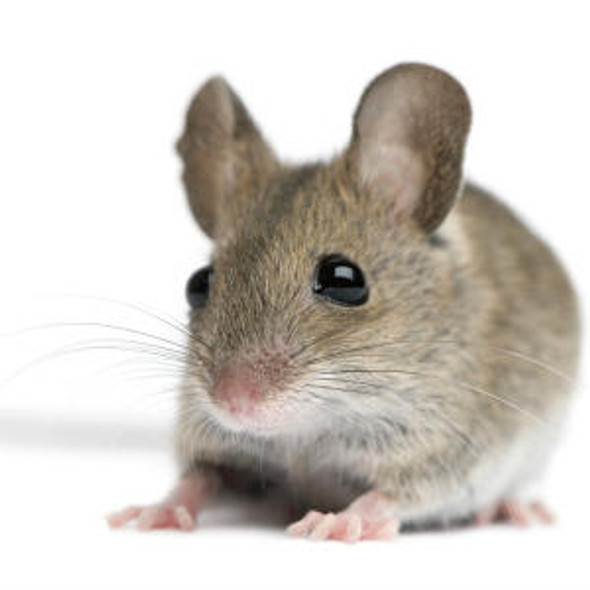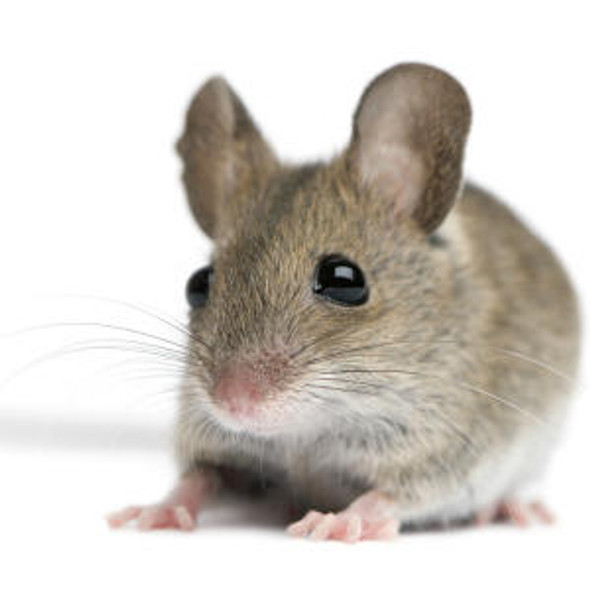Mouse Platelet glycoprotein 4 (Cd36) ELISA Kit
- SKU:
- MOEB0528
- Product Type:
- ELISA Kit
- Size:
- 96 Assays
- Uniprot:
- Q08857
- ELISA Type:
- Sandwich
- Synonyms:
- CD36, Collagen R, FAT
- Reactivity:
- Mouse
Description
| Product Name: | Mouse Platelet glycoprotein 4 (Cd36) ELISA Kit |
| Product Code: | MOEB0528 |
| Alias: | Platelet glycoprotein 4, Glycoprotein IIIb, GPIIIB, PAS IV, PAS-4, Platelet glycoprotein IV, GPIV, Cd36, CD36 |
| Uniprot: | Q08857 |
| Reactivity: | Mouse |
| Range: | Please contact us for more information |
| Detection Method: | Sandwich |
| Size: | 96 Assay |
| Storage: | Please see kit components below for exact storage details |
| Note: | For research use only |
| UniProt Protein Function: | CD36: Seems to have numerous potential physiological functions. Binds to collagen, thrombospondin, anionic phospholipids and oxidized LDL. May function as a cell adhesion molecule. Directly mediates cytoadherence of Plasmodium falciparum parasitized erythrocytes. Binds long chain fatty acids and may function in the transport and/or as a regulator of fatty acid transport. Receptor for thombospondins, THBS1 AND THBS2, mediating their antiangiogenic effects. Defects in CD36 are the cause of platelet glycoprotein IV deficiency (PG4D)[MIM:608404]; also known as CD36 deficiency. Platelet glycoprotein IV deficiency can be divided into 2 subgroups. The type I phenotype is characterized by platelets and monocytes/macrophages exhibiting complete CD36 deficiency. The type II phenotype lacks the surface expression of CD36 in platelets, but expression in monocytes/macrophages is near normal. Genetic variations in CD36 are associated with susceptibility to coronary heart disease type 7 (CHDS7). Belongs to the CD36 family. |
| UniProt Protein Details: | Protein type:Membrane protein, integral; Membrane protein, multi-pass; Cell adhesion Cellular Component: Golgi apparatus; extracellular space; protein complex; cell surface; mitochondrion; intracellular membrane-bound organelle; endoplasmic reticulum; integral to membrane; caveola; lipid raft; membrane; apical part of cell; plasma membrane; intracellular; sarcolemma; external side of plasma membrane Molecular Function:low-density lipoprotein receptor activity; protein binding; transforming growth factor beta binding; low-density lipoprotein binding; high-density lipoprotein binding; lipid binding Biological Process: positive regulation of blood coagulation; positive regulation of interleukin-12 production; cGMP-mediated signaling; phagocytosis, recognition; pattern recognition receptor signaling pathway; negative regulation of transcription from RNA polymerase II promoter; signal transduction; fatty acid metabolic process; negative regulation of transcription factor import into nucleus; low density lipoprotein mediated signaling; sequestering of lipid; cell surface receptor linked signal transduction; positive regulation of MAPKKK cascade; transport; positive regulation of cell-matrix adhesion; regulation of transcription from RNA polymerase II promoter in response to oxidative stress; cell adhesion; long-chain fatty acid transport; receptor-mediated endocytosis; cholesterol transport; positive regulation of I-kappaB kinase/NF-kappaB cascade; negative regulation of systemic arterial blood pressure; positive regulation of interleukin-6 production; long-chain fatty acid metabolic process; positive regulation of tumor necrosis factor production; negative regulation of angiogenesis; positive regulation of peptidyl-tyrosine phosphorylation; defense response to Gram-positive bacterium; triacylglycerol metabolic process; response to mechanical stimulus; lipoprotein transport; fatty acid oxidation; positive regulation of phagocytosis, engulfment; plasma membrane long-chain fatty acid transport; nitric oxide mediated signal transduction; apoptotic cell clearance; fatty acid transport; positive regulation of cytokine secretion |
| UniProt Code: | Q08857 |
| NCBI GenInfo Identifier: | 729081 |
| NCBI Gene ID: | 12491 |
| NCBI Accession: | Q08857.2 |
| UniProt Related Accession: | Q08857 |
| Molecular Weight: | 52,698 Da |
| NCBI Full Name: | Platelet glycoprotein 4 |
| NCBI Synonym Full Names: | CD36 antigen |
| NCBI Official Symbol: | Cd36 |
| NCBI Official Synonym Symbols: | FAT; GPIV; Scarb3 |
| NCBI Protein Information: | platelet glycoprotein 4; PAS-4; GPIIIB; PAS IV; glycoprotein IIIb; fatty acid translocase; platelet glycoprotein IV |
| UniProt Protein Name: | Platelet glycoprotein 4 |
| UniProt Synonym Protein Names: | Glycoprotein IIIb; GPIIIB; PAS IV; PAS-4; Platelet glycoprotein IV; GPIV; CD_antigen: CD36 |
| Protein Family: | Platelet glycoprotein |
| UniProt Gene Name: | Cd36 |
| UniProt Entry Name: | CD36_MOUSE |
| Component | Quantity (96 Assays) | Storage |
| ELISA Microplate (Dismountable) | 8×12 strips | -20°C |
| Lyophilized Standard | 2 | -20°C |
| Sample Diluent | 20ml | -20°C |
| Assay Diluent A | 10mL | -20°C |
| Assay Diluent B | 10mL | -20°C |
| Detection Reagent A | 120µL | -20°C |
| Detection Reagent B | 120µL | -20°C |
| Wash Buffer | 30mL | 4°C |
| Substrate | 10mL | 4°C |
| Stop Solution | 10mL | 4°C |
| Plate Sealer | 5 | - |
Other materials and equipment required:
- Microplate reader with 450 nm wavelength filter
- Multichannel Pipette, Pipette, microcentrifuge tubes and disposable pipette tips
- Incubator
- Deionized or distilled water
- Absorbent paper
- Buffer resevoir
*Note: The below protocol is a sample protocol. Protocols are specific to each batch/lot. For the correct instructions please follow the protocol included in your kit.
Allow all reagents to reach room temperature (Please do not dissolve the reagents at 37°C directly). All the reagents should be mixed thoroughly by gently swirling before pipetting. Avoid foaming. Keep appropriate numbers of strips for 1 experiment and remove extra strips from microtiter plate. Removed strips should be resealed and stored at -20°C until the kits expiry date. Prepare all reagents, working standards and samples as directed in the previous sections. Please predict the concentration before assaying. If values for these are not within the range of the standard curve, users must determine the optimal sample dilutions for their experiments. We recommend running all samples in duplicate.
| Step | |
| 1. | Add Sample: Add 100µL of Standard, Blank, or Sample per well. The blank well is added with Sample diluent. Solutions are added to the bottom of micro ELISA plate well, avoid inside wall touching and foaming as possible. Mix it gently. Cover the plate with sealer we provided. Incubate for 120 minutes at 37°C. |
| 2. | Remove the liquid from each well, don't wash. Add 100µL of Detection Reagent A working solution to each well. Cover with the Plate sealer. Gently tap the plate to ensure thorough mixing. Incubate for 1 hour at 37°C. Note: if Detection Reagent A appears cloudy warm to room temperature until solution is uniform. |
| 3. | Aspirate each well and wash, repeating the process three times. Wash by filling each well with Wash Buffer (approximately 400µL) (a squirt bottle, multi-channel pipette,manifold dispenser or automated washer are needed). Complete removal of liquid at each step is essential. After the last wash, completely remove remaining Wash Buffer by aspirating or decanting. Invert the plate and pat it against thick clean absorbent paper. |
| 4. | Add 100µL of Detection Reagent B working solution to each well. Cover with the Plate sealer. Incubate for 60 minutes at 37°C. |
| 5. | Repeat the wash process for five times as conducted in step 3. |
| 6. | Add 90µL of Substrate Solution to each well. Cover with a new Plate sealer and incubate for 10-20 minutes at 37°C. Protect the plate from light. The reaction time can be shortened or extended according to the actual color change, but this should not exceed more than 30 minutes. When apparent gradient appears in standard wells, user should terminatethe reaction. |
| 7. | Add 50µL of Stop Solution to each well. If color change does not appear uniform, gently tap the plate to ensure thorough mixing. |
| 8. | Determine the optical density (OD value) of each well at once, using a micro-plate reader set to 450 nm. User should open the micro-plate reader in advance, preheat the instrument, and set the testing parameters. |
| 9. | After experiment, store all reagents according to the specified storage temperature respectively until their expiry. |
When carrying out an ELISA assay it is important to prepare your samples in order to achieve the best possible results. Below we have a list of procedures for the preparation of samples for different sample types.
| Sample Type | Protocol |
| Serum | If using serum separator tubes, allow samples to clot for 30 minutes at room temperature. Centrifuge for 10 minutes at 1,000x g. Collect the serum fraction and assay promptly or aliquot and store the samples at -80°C. Avoid multiple freeze-thaw cycles. If serum separator tubes are not being used, allow samples to clot overnight at 2-8°C. Centrifuge for 10 minutes at 1,000x g. Remove serum and assay promptly or aliquot and store the samples at -80°C. Avoid multiple freeze-thaw cycles. |
| Plasma | Collect plasma using EDTA or heparin as an anticoagulant. Centrifuge samples at 4°C for 15 mins at 1000 × g within 30 mins of collection. Collect the plasma fraction and assay promptly or aliquot and store the samples at -80°C. Avoid multiple freeze-thaw cycles. Note: Over haemolysed samples are not suitable for use with this kit. |
| Urine & Cerebrospinal Fluid | Collect the urine (mid-stream) in a sterile container, centrifuge for 20 mins at 2000-3000 rpm. Remove supernatant and assay immediately. If any precipitation is detected, repeat the centrifugation step. A similar protocol can be used for cerebrospinal fluid. |
| Cell culture supernatant | Collect the cell culture media by pipette, followed by centrifugation at 4°C for 20 mins at 1500 rpm. Collect the clear supernatant and assay immediately. |
| Cell lysates | Solubilize cells in lysis buffer and allow to sit on ice for 30 minutes. Centrifuge tubes at 14,000 x g for 5 minutes to remove insoluble material. Aliquot the supernatant into a new tube and discard the remaining whole cell extract. Quantify total protein concentration using a total protein assay. Assay immediately or aliquot and store at ≤ -20 °C. |
| Tissue homogenates | The preparation of tissue homogenates will vary depending upon tissue type. Rinse tissue with 1X PBS to remove excess blood & homogenize in 20ml of 1X PBS (including protease inhibitors) and store overnight at ≤ -20°C. Two freeze-thaw cycles are required to break the cell membranes. To further disrupt the cell membranes you can sonicate the samples. Centrifuge homogenates for 5 mins at 5000xg. Remove the supernatant and assay immediately or aliquot and store at -20°C or -80°C. |
| Tissue lysates | Rinse tissue with PBS, cut into 1-2 mm pieces, and homogenize with a tissue homogenizer in PBS. Add an equal volume of RIPA buffer containing protease inhibitors and lyse tissues at room temperature for 30 minutes with gentle agitation. Centrifuge to remove debris. Quantify total protein concentration using a total protein assay. Assay immediately or aliquot and store at ≤ -20 °C. |
| Breast Milk | Collect milk samples and centrifuge at 10,000 x g for 60 min at 4°C. Aliquot the supernatant and assay. For long term use, store samples at -80°C. Minimize freeze/thaw cycles. |










